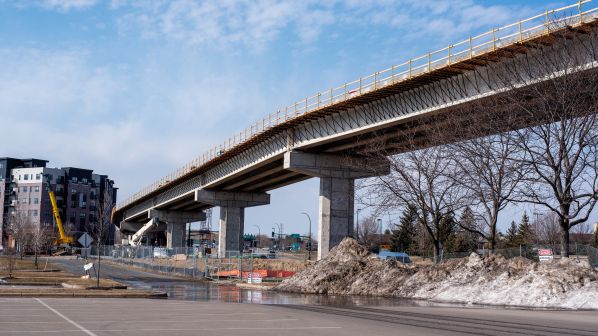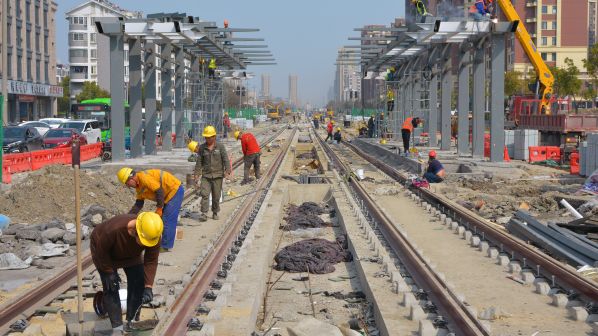TO help raise awareness of the sources and means of addressing disputes over the introduction of new technology, risk mitigation and dispute resolution consultancy HKA recently published its third annual Crux report, which provides an insight into the most common causes of disputes and commercial claims.
The report looks at 1185 engineering and construction projects from 88 countries where HKA has provided claims consulting and dispute resolution services, including 82 rail and transit, rolling stock and manufacturing, and signalling and technology related projects with an average capital expenditure of $US 1.58bn.
The five most common project issues in the rail industry are:
- incomplete design
- changes in scope
- late issue of design information
- incorrect design specification, and
- late approval of design.
Owners, operators, contractors and manufacturers alike are having to manage these challenging issues, resulting in a marked rise in contractual claims and disputes, with parties understandably looking to protect their own commercial interests.
Design problems drive the greatest number of claims and disputes in the rail sector. The root cause of such challenges can often be traced back to failed coordination, rather than poor component design or incompetent designers, while pressure on time and the use of lump-sum design commissions compound problems.
Through early contractor engagement, owners and operators can lead the concerted action needed to pre-empt these problems by:
- actively involving the contractor or manufacturer in the preliminary design, clarifying design requirements and ensuring design maturity before contract award
- recognising the true capabilities of the supply chain, design teams and contract management, and
- resolving buildability issues ahead of production.
The design failures driving an increase in the number of disputes stem mainly from unrealistic project programmes tendered on immature designs. This is particularly prevalent where innovative new technologies are adopted, as unforeseen challenges can arise during testing, giving rise to prolonged programme timescales.
Competition can drive prices down as contractors and manufacturers find themselves in a “race to the bottom,” offering value-engineered solutions that they cannot fully develop due to limited funds. As owners and operators set the timescale, and the open tender price is initially decisive, contractors and manufacturers seek additional time and costs through variation orders, which are often lodged too late.
Owners and operators also seek the lowest design price despite the need for the supply chain to explore new innovative solutions, so design consultants operating on slim margins push design detail and associated risk down the supply chain to the contractors and manufacturers. Claims are effectively embedded in contracts at the point of signature when the design is incomplete. We have also witnessed this as design changes requested by operators (borne of the need to include new technologies) have arisen, causing rework and programme prolongation representing material changes for the rolling stock designer or manufacturer. Yet design represents only a small proportion of the overall cost of projects.
Competition can drive prices down as contractors and manufacturers find themselves in a 'race to the bottom', offering value-engineered solutions that they cannot fully develop due to limited funds.
Owners and operators, contractors and manufacturers would benefit from delivering projects on time, to specification and budget, if:
- more time is taken to mature the design earlier together with more detailed early project planning, especially where new technologies such as cyber security and improved wayside communications are incorporated, affecting traffic control management systems (TCMS) and their subsystems
- greater emphasis is placed on engaging suppliers earlier, pre-empting latent design issues, and
- design risk is apportioned to the party best equipped to address it.
While these changes would lengthen the design process, the overall project schedule would not be adversely affected if production is able to proceed more efficiently. This would also result in greater price and schedule certainty, fewer defects and less retrofitting or rework, and a more acceptable risk profile for all parties involved.
Demand for new technologies and sustainable materials is also leading to more late approvals as design engineers and regulatory authorities struggle to check compliance. A lack of administrative capacity results in a backlog of contractor and manufacturer requests. Late approvals could be curbed if:
- contractors and manufacturers adopt a more proactive approach and submit requests earlier
- review points are determined in contracts to specify acceptable timelines, and
- owners and operators simplify internal processes and train more administrative and technical staff.
Changes in scope also need to be addressed and could be facilitated by enhanced supply chain engagement and better communication and training.
North and South America
In the Americas, there is strong demand to expand existing rail infrastructure, and implement advanced technologies, including high-speed rail, and automated train control systems. However, rapid advances in technology have made it more difficult for owners and regulatory agencies to define the scope and requirements for such projects. Manufacturers and suppliers are also struggling to integrate technology advances with legacy systems and deliver projects under fixed price agreements with significant liquidated damages for missing schedule milestones.
Complicating this further, rail projects, particularly those for dense urban areas, require extensive interfaces and third-party coordination, and face permit and stakeholder review challenges. Major projects often include multiple infrastructure contracts and separate rolling stock and systems packages.

Contract packages require interface agreements to coordinate the design, construction, and handover of infrastructure facilities and define liability for cross-impacts. To avoid interface impacts during design development, greater investment is required in front end scoping and design packaging to support optimal sequencing of procurement, construction, manufacturing, and installation.
At the systems level, design packages often require a greater design development to interface with or replace legacy systems. Systems integration may require coordination of existing systems with new or existing infrastructure for wayside, onboard system, and back office control servers. Systems integration may also involve interoperability with other railways. When integrating new systems with advanced technology, the design development, particularly for software, may be akin to a research and development process resulting in extended review and approvals, and multiple design iterations. Design delays can have a domino effect on procurement, inspection, manufacturing, installation and testing.
A careful initial risk assessment of advanced technology and software design is therefore beneficial to avoid delays in systems development, installation and testing.
Asia
In Asia’s price-conscious market, the rail sector, with tight margins and high risks, has really struggled, especially with ever increasing competition. It is common for contractors to chase prices to the bottom to win contracts, eroding already dangerously thin profit margins to create a breeding ground for all manner of issues. Lack of integration between project teams and other stakeholders creates large backlogs of contractor requests, leading to project failures.
For Chinese contractors, scope change remains the perennial driver of disputes and claims on large domestic and foreign projects. As contractors take on increasingly challenging and price-conscious projects, bid prices are not often properly and accurately estimated with obvious consequences.
Most often, due to the complex topography and remote locations of rail projects, pre-bid site visits do little to help contractors accurately price the scope of work. Contracts are therefore awarded based on low price inputs from contractors, which increases pressure on sub-contractors to deliver to the standards expected, but for insufficient reward.
Effective coordination between the contract management teams and commercial and technical teams is a must to have a positive impact on the management of changes and variations.
In small but highly urbanised countries, integration of railway projects with other modes of transport is becoming even more complex and challenging. This requires proper planning, and effective management of and communication with multiple stakeholders. Large cross-border railway projects are directed and implemented by various central governments, regional departments and public bodies, as well as private developers and investors. Design change and late approvals further complicate the issues.
Effective coordination between the contract management teams and commercial and technical teams is a must to have a positive impact on the management of changes and variations. The challenge is the multi-national effort required to coordinate these projects, as well as to integrate the vast array of different systems. Again, clear and well-structured control mechanisms and an emphasis on risk management are a pre-requisite.
Europe and Britain
The EU motto, varietate concordia (unity in diversity), is an apt description of the current landscape of European rail, with a Single European Railway Area far from being realised. Any project undertaking must ensure advances in technology are future proofed and can be implemented with minimal disruption to cross-border travel, and operated for as long as practicable, so that the whole life asset cost is minimised.
In Britain, infrastructure manager Network Rail’s (NR) latest five-year control period (CP6), running from 2019 to 2024, represents a distinct shift from its predecessor with an aim to put passengers first, with NR focused not just on delivering large-scale infrastructure projects and railway improvements, but also ensuring that rail journeys are made easier and more convenient for passengers.
While engineering excellence, particularly in the pursuit of safety and reliability, remains central to any contractor’s offering, this new passenger-centric focus will inevitably impact how the supply chain will engage with NR and other owners and operators during CP6, which will require them to further adapt their working practices.
Building on the endeavours of the rail industry supply chain to work in a more integrated manner, collaborative working is being pursued more than ever by all project stakeholders. It has long been recognised that, as projects become ever more complex, there is a need to be more proactive in facilitating solutions that achieve the overall objectives. Greater engagement with the entire supply chain and other stakeholders helps ensure that all participating project stakeholders can contribute something to support NR’s goals. Regardless of the works being completed, putting passengers and freight-users first starts with design collaboration and clear lines of communication between owners, operators and all layers of the supply chain. Without early contractor engagement and the concerted effort needed to actively involve contractors and manufacturers prior to contract award, it is unlikely that we will ever recognise the true capabilities of the supply chain.
In conclusion, taking the time to mature new designs prior to contract award will yield better returns by reducing exposure to project overruns and unforeseen increases in cost.
Clarity of communication regarding objectives so that the right technologies and associated interfaces are selected will help reduce design amendments, retrofitting, rework and modifications late in the project, helping to avoid disputes.

